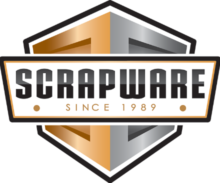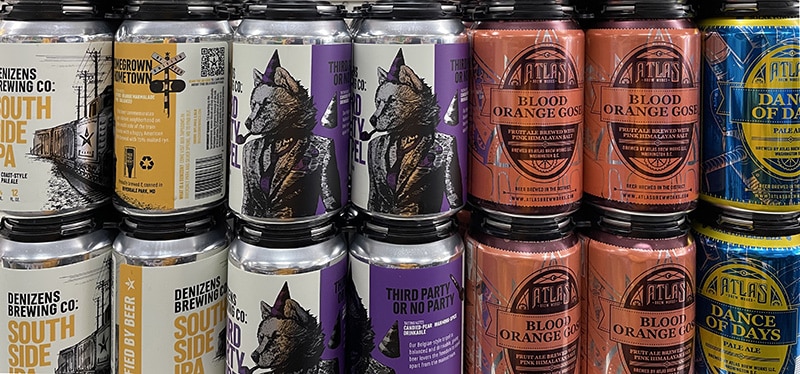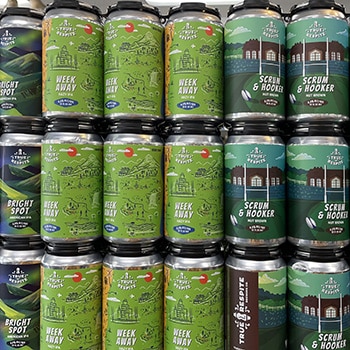You can start your day with coffee, enjoy sparkling water for lunch, a cocktail before or wine with dinner and sip an herbal tea before bed—and today you can consume all these beverages out of an aluminum can.
The estimated demand for aluminum cans is expected to increase at 4.5 percent CAGR, surpassing $112.3 billion dollars through 2031, according to the research firm Future Markets Insights (FMI).
According to the February FMI report, this increase will largely be fueled by increasing demand for beverage packaging. Industry experts point to numerous factors driving this trend. First is increasing consumer demand for single-serving, portable drinks, at the same time there is rising awareness of the drawbacks of single-use plastic. Some state and local governments have already regulated or restricted this use of plastic. Given the high recyclability rates of aluminum, it is considered a more eco-friendly packaging alternative that consumers prefer.
The dramatic increase in the number of single-serving flavored alcoholic beverages, wine, craft beers, soft drinks, energy drinks, coffees and “mocktails” makes aluminum packaging advantageous for another reason. Technology and innovation with the metal are allowing brand owners to use cans as a promotional tool, creating growth opportunities in the crowded market. Can manufacturers such as Crown Holdings and Ball Corp. are now able to offer a variety of unique shapes, sizes, finishes, textures, and other features to improve shelf visibility and product differentiation. Premium brands are now sold in cans with distinctive shapes and eye-catching graphics to grab consumer attention. There are cans coated with temperature sensitive ink, that allow graphics to change as the cold beverage inside is consumed. Photochromic finishes react to UV rays, so cans’ artwork will change in the sunlight, say at a tailgate. Glitter flakes coated on can finishes make them sparkle, and a “frost” finish applied to cans, gives them that just-out-of-the-fridge feeling.
History of Canned Beverages
Striving to increase efficiency was behind the original move to sell beverages in metal cans, according to the Can Manufacturers Institute website. As early as the 1930s, can manufacturers had begun to explore the possibility of adapting cans to package carbonated beverages. Beer and soft drink companies wanted a way to deliver more volume more efficiently to consumers. Cans were sturdier than glass and had a better shape for shipping compared to a bottle. Cliquot Club ginger ale was the first canned soft drink in 1938. There were glitches with leakage and flavor, but by 1948 the Continental Can Company and Pepsi-Cola launched the first major soft drink in cans. The Korean War slowed down the use of metal for beverage cans, but by the 1960s innovation allowed for the use of aluminum instead of steel. Reynolds Metal Company manufactured the first aluminum beverage cans in 1963 and by 1967 Pepsi and Coke used aluminum cans. By 1985, the aluminum can was the most popular beverage packaging in any market.
The advantages of aluminum for packaging have been recognized for some time.
“Aluminum beverage cans are a marvel of sustainability, functionality and modern design,” states the Aluminum Association on its website. The association outlines the metal’s benefits:
- Infinitely recyclable
- Easy to stack
- Lightweight
- Strong
- Efficient to ship and store, enabling brands to transport more beverages using less protective packaging material
- Chills quickly
- Protects flavor and freshness
- Superior metal “canvas” for 360 degree creative and artistic labeling
Recognizing these benefits, many beverage companies have now extended their product line to include single-serving canned drinks. Liquor brands such as Smirnoff, Bacardi, Jim Beam, and others, sell canned highballs. Not to be outdone, non-alcoholic beverage brands sell a plethora of herb-infused high-end mocktails. Coffee brands like Starbucks have canned everything from creamy oat milk lattes to nitro brews. Ball Corp. now make cans with a cap, giving them the benefits of a bottle. Ball has also started selling aluminum cups that are as recyclable as cans. The cups are made of 90 percent recycled content and are used at some sports and entertainment venues. This trend has demonstrated so much success that industry watchers think it may even extend into personal care products, with aluminum packaged deodorants and perfumes.
This increased use of aluminum for consumer products bodes well for the recycling industry.
Aluminum is a more valuable material than plastic or glass, helping municipal recycling programs become more financially viable. This helps subsidize the recycling of less valuable materials in the curbside bin. Additionally, aluminum is recycled in a closed loop, to become new cans or other valuable consumer products, not downcycled into less valuable products like carpet fiber.
Despite the value of aluminum and prevalence of recycling, there is still room for improvement. According to an Aluminum Association 2021 report, the U.S. industry recycling rate which includes all aluminum used beverage containers rose to 59.7 percent in 2021 from 55.7 percent in 2019. Industry hopes that with an increase in cans used by consumers, and an increased awareness of the importance of recycling, we can expect recycling rates to increase as well.
About ScrapWare Corporation: Since 1989, Rockville, Maryland-based ScrapWare Corporation has been the software of choice for the recycling industry. Its ease of installation and simplicity saves users time and money, while helping them achieve compliance and maintain accurate business insights. With state-of-the-art functionality that‘s tailored to each organization’s unique requirements, ScrapWare is an advanced dynamic software solution that alleviates the most pressing recycling industry worries. For more information, please call (301) 517-8500 or visit https://www.scrapware.com/.



